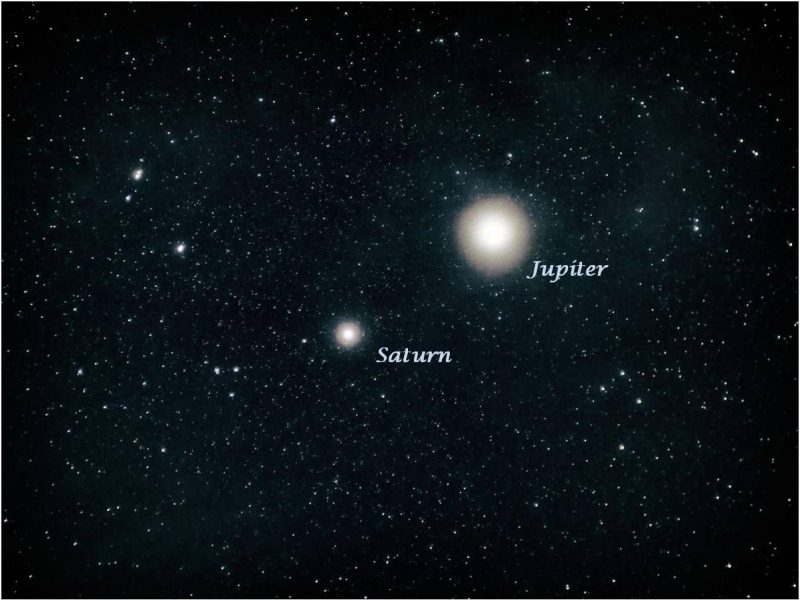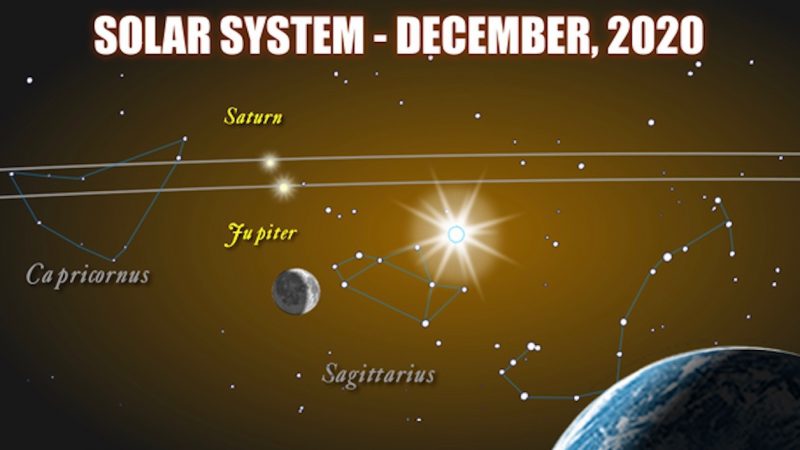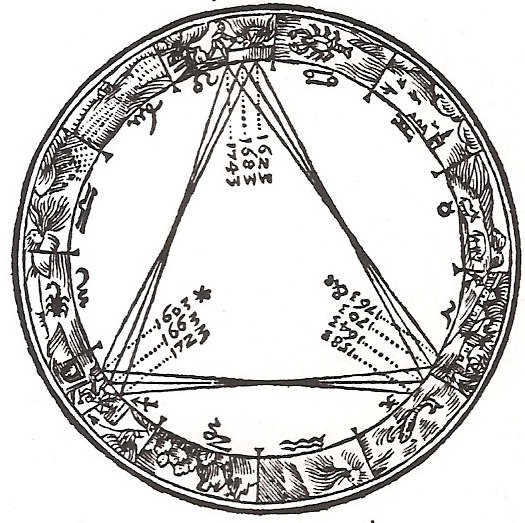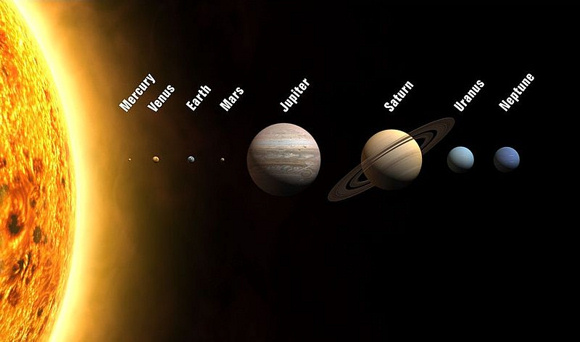
These next several evenings – October 21, 22 and 23, 2020 – watch for the waxing moon to sweep by the gas giant planets, Jupiter and Saturn. Jupiter, which is the brighter of the two, beams some 13 times brighter than Saturn and brighter than all the stars. The only starlike object to outshine it in the evening sky right now is the red planet Mars, which you’ll find to the east of Jupiter and Saturn, low in the eastern sky at evening dusk and nightfall. The moon will pass Mars, too, later this month. Plus Saturn and Jupiter are very noticeable for their nearness to each other in 2020. They’re gearing up for their great conjunction before this year ends. It’ll be the closest Jupiter-Saturn conjunction in 397 years!
The 2021 lunar calendars are here! Order yours before they’re gone. Makes a great gift!
Jupiter-Saturn conjunctions happen every 20 years. The last one took place on May 28, 2000. The next one after 2020 will come on October 31, 2040.
Why are Jupiter and Mars so bright now? Jupiter is always bright by virtue of its large size; it’s the biggest planet in our solar system. Mars is tiny, smaller than Earth, but it’s bright now because Earth passed between Mars and the sun on October 13. Saturn, the sixth planet outward from the sun, is respectably bright but fainter than either Jupiter or Mars. It’s the farthest world that you can easily see with the unaided eye.
The farther away that a planet resides from the sun, the more slowly it travels and the longer its orbit. Mars takes 687 Earth-days to travel around the sun once. Jupiter takes about 12 Earth-years to orbit once. Saturn takes nearly 30 Earth-years to orbit the sun.
For Jupiter and Saturn, because they take so long to orbit the sun, you might see that it takes them about this same amount of time to move entirely around our sky, through all the constellations of the zodiac.
And – because Jupiter and Saturn take so long to pass through all the constellations of the zodiac – a Jupiter-Saturn conjunction is the rarest of planet-planet conjunctions. Jupiter-Saturn conjunctions recur in periods of 20 years.

The 2020 Jupiter-Saturn conjunction will come in two months, on December 21. That’s when Jupiter and Saturn will have the same right ascension on our sky’s dome.
But don’t wait until then to see them. These two worlds are dazzling right now! Use the moon to find Jupiter and Saturn these next few nights and then watch for Jupiter to close the gap between itself and Saturn over the next two months.

Also, this upcoming Jupiter-Saturn conjunction – December 21, 2020 – counts as super special. That’s because it’ll be the closest Jupiter-Saturn conjunction since July 16, 1623. Jupiter and Saturn will only be 0.1 degree (1/5th the moon’s apparent diameter) apart on December 21, 2020, at about 14:00 UTC.
Jupiter and Saturn ended their retrograde motion (westward movement in front of the backdrop stars) on September 13 and 29, 2020, respectively. These two worlds are now moving eastward in front the constellation Sagittarius the Archer.
At their December 21 conjunction, these two worlds will meet up in front of the constellation Capricornus the Seagoat.

When the moon sweeps past Jupiter and Saturn in October 2020, it will reside about 6 degrees apart on the sky’s dome. (For reference, the moon’s angular diameter equals about 1/2 degree.) This next month – from October 21 to November 21, 2020 – Jupiter will move about 5 degrees while Saturn will go about 2 degrees. So Jupiter will gain 3 degrees on Saturn, and the two gas giant planets will be some 3 degrees apart as of November 21, 2020.
The following month – November 21 to December 21, 2020 – Jupiter will travel about 6 degrees and Saturn 3 degrees. That means Jupiter will have bridged the 3-degree gap that had existed between the king planet and Saturn on November 21, 2020.
Overall – from October 21 to December 21, 2020 – Jupiter will have traveled 11 degrees and Saturn 5 degrees. Bingo! That’ll completely close the 6-degree gap that separated Jupiter and Saturn on October 21, 2020. December 21 will not only present the first Jupiter-Saturn conjunction since the year 2000, but it’ll give us the closest Jupiter-Saturn conjunction since the year 1623. The extra-close Jupiter-Saturn conjunction in 2020 won’t be matched again until the Jupiter-Saturn conjunction of March 15, 2080!

Bottom line: On October 21, 22 and 23, 2020, let the moon serve as your guide to the gas giant planets Jupiter and Saturn. Then watch for Jupiter to slowly but surely close the 6-degree gap between itself and Saturn. When Jupiter finally catches up with Saturn on December 21, 2020, Jupiter will pass a scant 0.1 degrees to the south of Saturn, to stage the closest Jupiter-Saturn conjunction in 397 years!
Read more: Moon and Mars meet in late October 2020
Read more: Before 2020 ends, a great conjunction of Jupiter and Saturn











